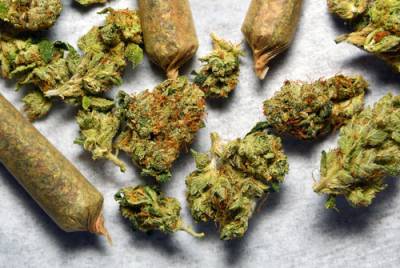The weed plant, also known as cannabis, holds a rich history and a multitude of uses beyond its recreational and medicinal purposes. From its cultivation to its diverse applications, the weed plant offers a wealth of benefits and possibilities. In this guide, we’ll explore the various aspects of the weed plant, including its anatomy, cultivation, uses, and potential impact on society.
Understanding the Anatomy of the Weed Plant
The weed plant is a complex organism with several distinct parts, each playing a vital role in its growth and development:
- Flowers: The flowers of the weed plant, also known as buds or nugs, contain the highest concentration of cannabinoids, including THC and CBD, which are responsible for its psychoactive and medicinal effects.
- Leaves: The leaves of the weed plant come in various shapes and sizes, with the iconic serrated edges that are often associated with cannabis.
- Stems and Branches: The stems and branches provide structural support for the plant and facilitate the transport of water, nutrients, and sugars throughout its system.
- Roots: The roots of the weed plant anchor it in the soil and absorb water and nutrients from the surrounding environment, essential for its growth and health.

Cultivating the Weed Plant: From Seed to Harvest
Cultivating the weed plant requires careful attention to environmental factors such as light, temperature, humidity, and soil quality. Here’s a brief overview of the cultivation process:
- Germination: The process begins with germinating cannabis seeds, either by placing them directly in soil or by soaking them in water until they sprout.
- Vegetative Growth: During the vegetative stage, the weed plant focuses on growing stems, leaves, and branches, typically under a light cycle of 18-24 hours of light per day.
- Flowering: When the plant reaches maturity, it enters the flowering stage, characterised by the development of buds containing high concentrations of cannabinoids.
- Harvesting: Once the buds are mature and fully developed, they are harvested, dried, and cured to enhance their flavour, potency, and shelf life.
The Versatility of the Weed Plant: Beyond Recreation and Medicine
While cannabis is most commonly associated with its recreational and medicinal uses, the weed plant has a wide range of applications beyond these realms:
- Industrial Uses: Hemp, a variety of the cannabis plant, is used in the production of textiles, paper, biofuels, construction materials, and more.
- Nutritional Value: Cannabis seeds are rich in protein, omega-3 and omega-6 fatty acids, vitamins, and minerals, making them a nutritious addition to a healthy diet.
- Environmental Benefits: Cannabis cultivation can have positive environmental impacts, including carbon sequestration, soil remediation, and sustainable farming practices.
Conclusion: Embracing the Potential of the Weed Plant
In conclusion, the weed plant offers a multitude of benefits and possibilities, from its medicinal and recreational uses to its industrial, nutritional, and environmental applications. By understanding the anatomy, cultivation, and versatility of the weed plant, we can embrace its potential to improve our lives and contribute positively to society. Whether you’re a cannabis enthusiast, a farmer, an entrepreneur, or an advocate, the weed plant holds promise and opportunity for all who dare to explore its depths.
